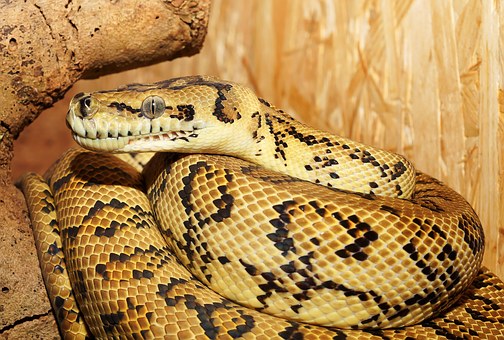
(public domain image from www.pixabay.com)
Those of us who do yoga and meditation, often find ourselves in the company of our animal companions, usually cats and dogs. Imagine meditating while python snakes crawl around the room. That's exactly what is happening at at Buddhist Temple just south of the former capital Yango and has received the nickname Hmwe Paya or “snake temple” from locals. Located in the middle of of a lake, the temple houses some 30 pythons, some measuring seven and eight feet in length, that can be found draped across windows and basking in the warmth of the sun, gliding across the temple’s floors, coiled around the many Buddha statues, or weaving themselves through the branches of the tree in the pagoda’s main hall.
Many of the local residents see the presence of the pythons as a sign of the pagoda’s auspiciousness, and visit frequently to pray and make offerings to its reptilian inhabitants. People can be found prostrating below the snake-filled tree, tucking 1,000 kyat notes (US$0.60) between the coils of the snakes, and, if they are brave enough, gently caressing the snakes for good fortune.
Nay Myo Thu, a 30-year-old farmer, brings the snakes that he finds in his fields to the temple as he believes that he will receive good fortune by bringing them to the temple instead of killing them. In doing so, he follows the Buddhist principle that all animals are sentient beings that have the potential to reincarnate as humans. “I don’t want to bring about any misfortune by killing a creature," he explained. "Catching and donating the snakes brings me good fortune instead.”
Snakes and serpents have mythical significance both Hindu and Buddhist iconography. According to Buddhist mythology, the snake king Mucalinda protected the Buddha from a storm after he attained enlightenment. During the seven weeks that the Buddha meditated after attaining enlightenment, the sky darkened and torrential rains descended. When the rains threatened the Buddha, the snake king came forth and protected him from the elements by spreading its hood over the Buddha’s head to act as a shelter.
(source: Buddhdistdoor.net)
 RSS Feed
RSS Feed